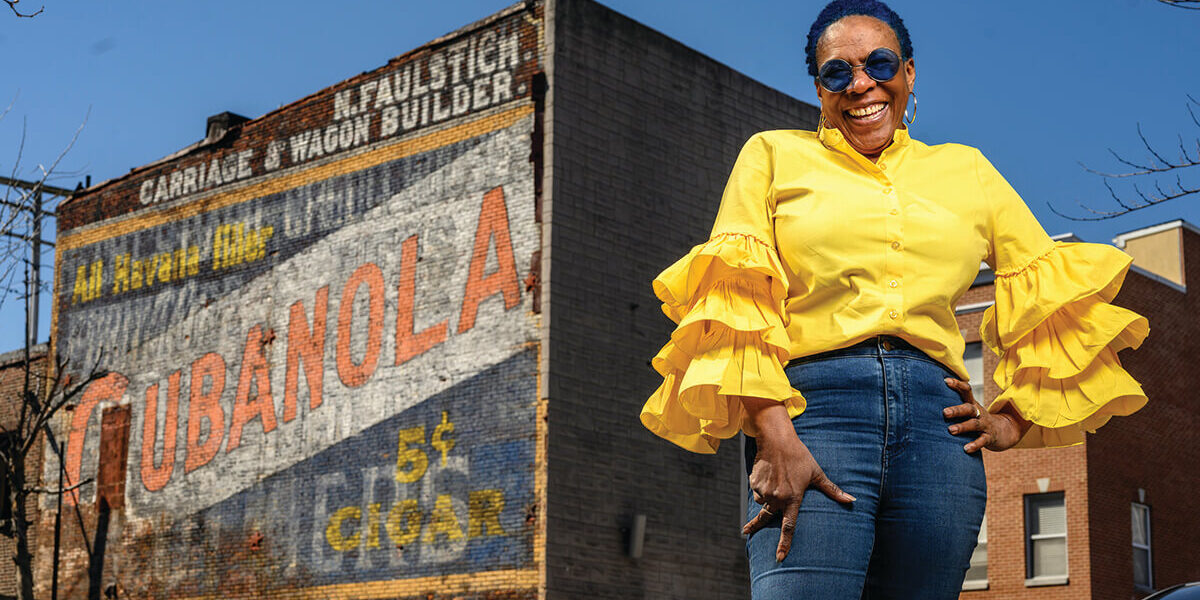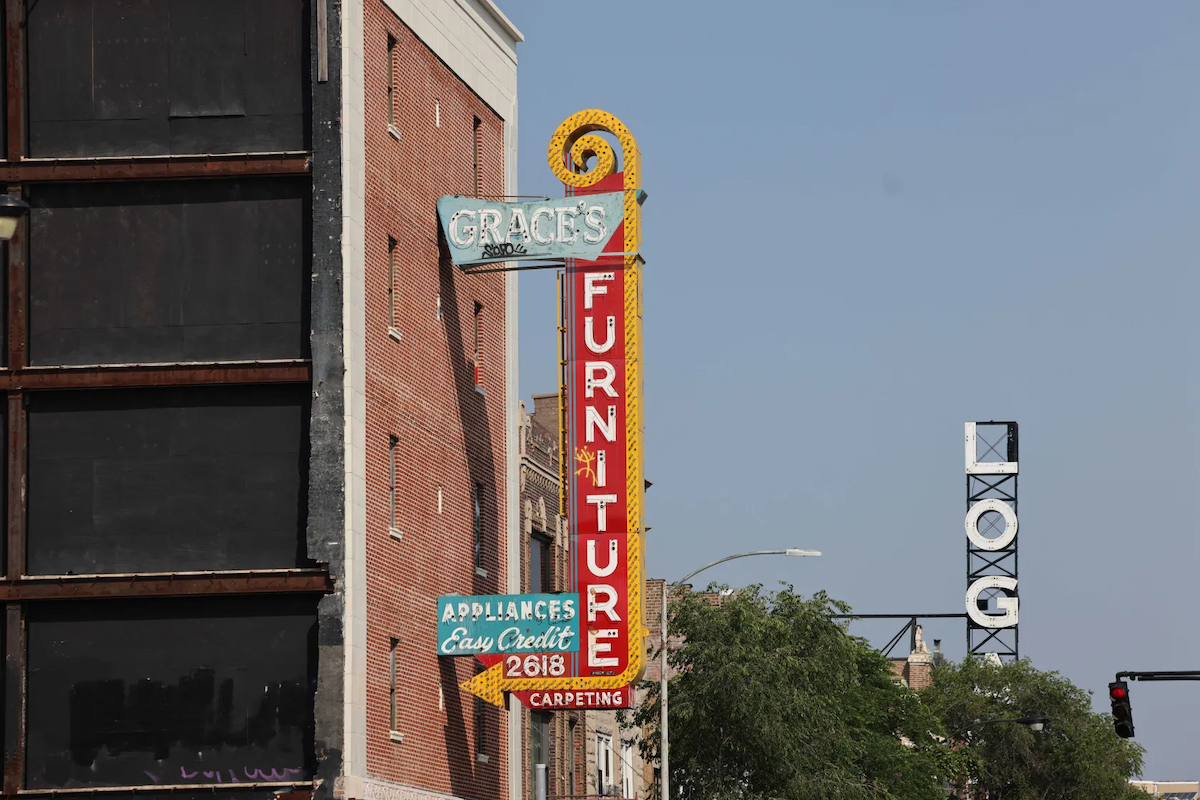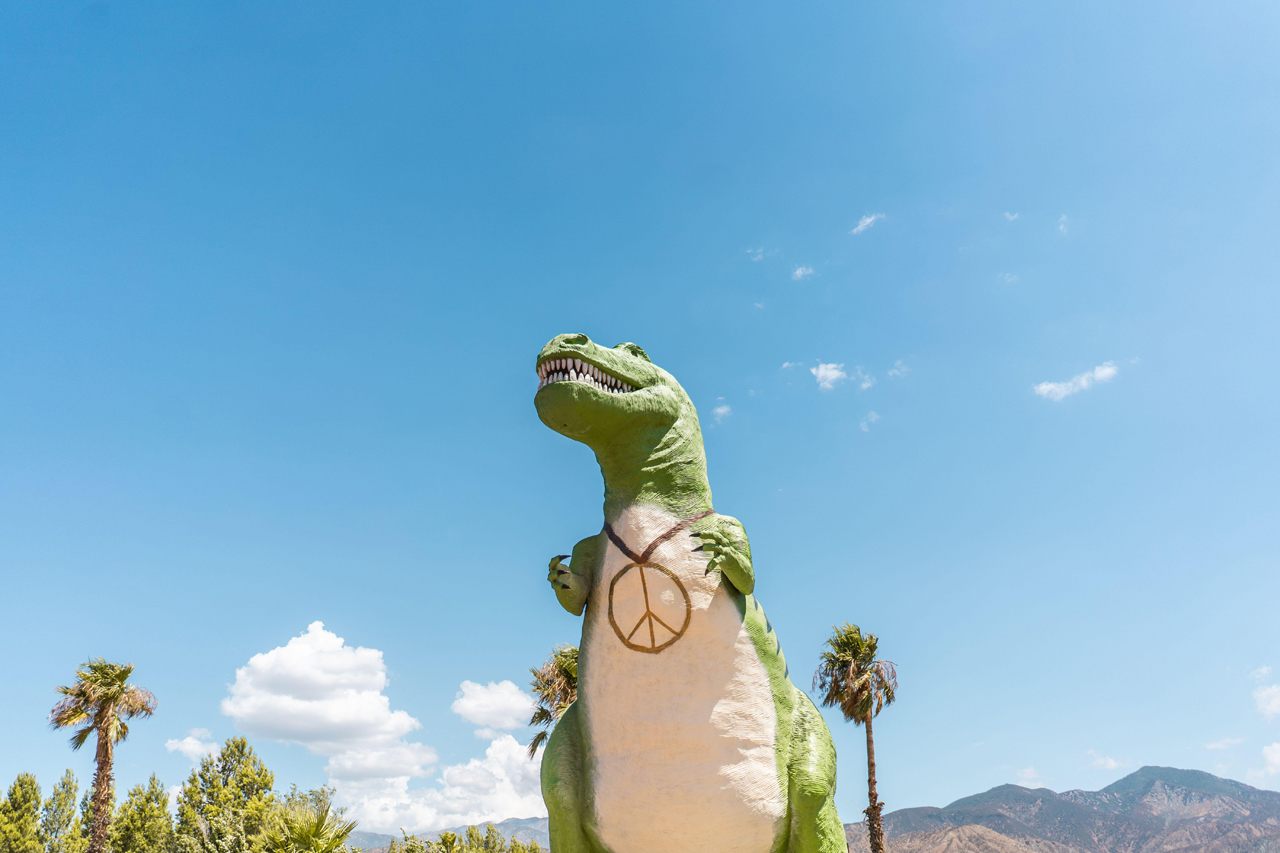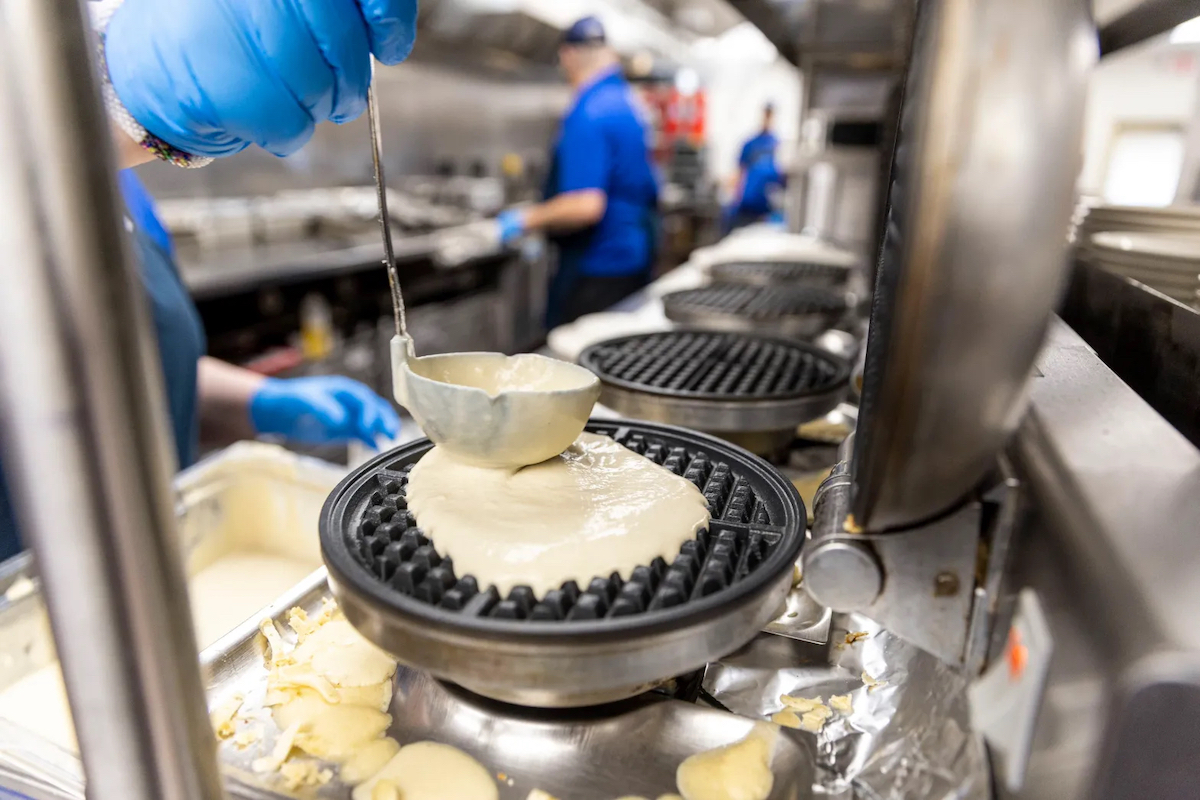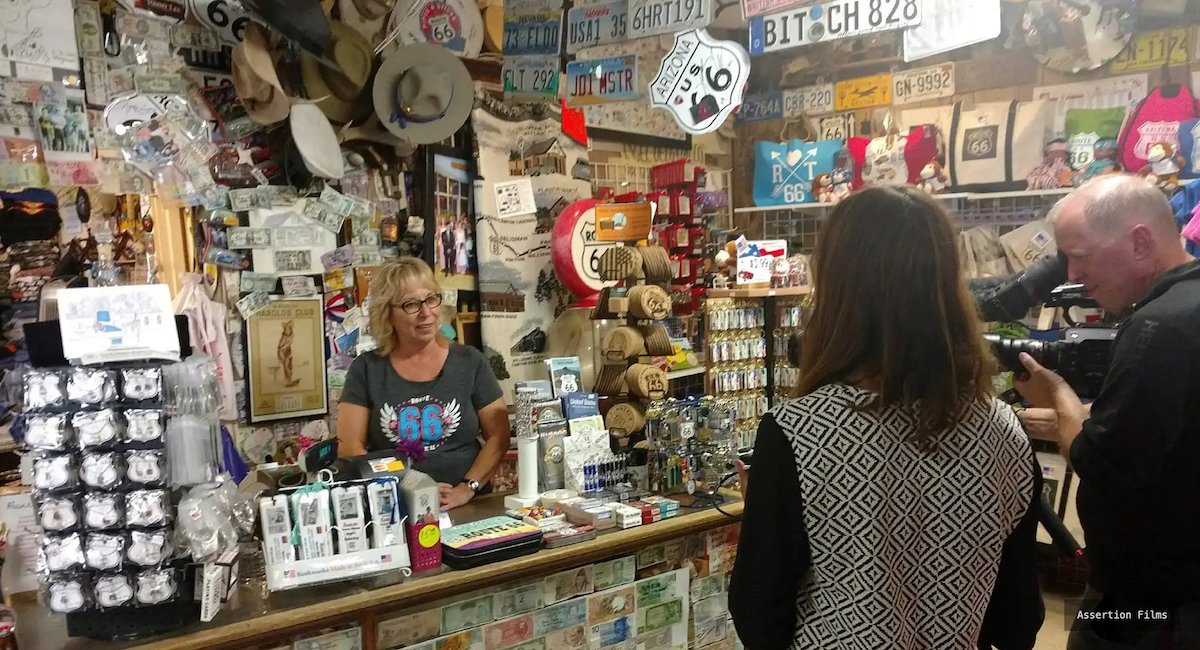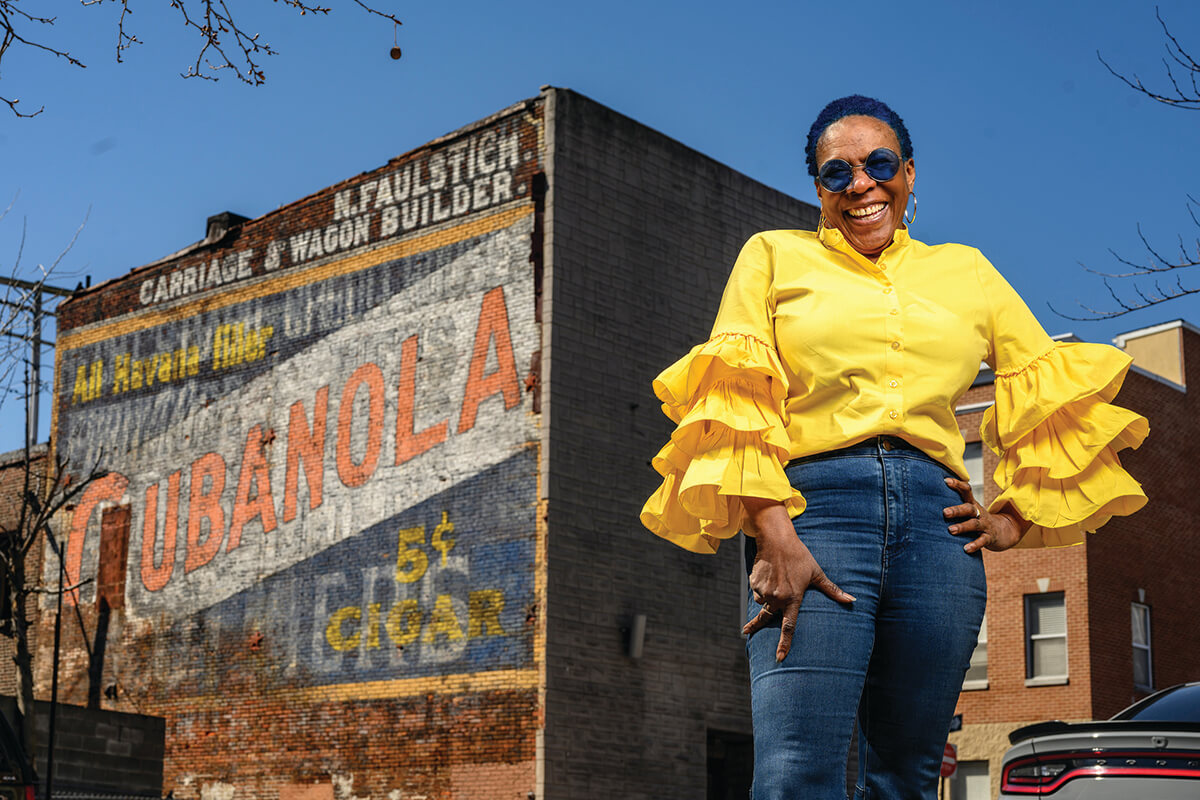Vintage business signs could be saved under proposed ordinance
Grace’s Furniture is gone, but the sign remains on the building in Logan Square. Ashlee Rezin/Sun-Times
From the Chicago Sun-Times: In the 2012 book “Signs, Streets and Storefronts,” author Martin Treu wrote that old neon signs “often serve as important urban landmarks.”
They “help to visually identify key locations in a city, marking them with distinct visual icons,” he wrote, and give streets “character and animation, reinforcing local history.”
Mayor Brandon Johnson and his new City Council floor leader obviously agree.
At Wednesday’s Council meeting, Johnson introduced an ordinance to protect Chicago’s most iconic “vintage signs,” including the Grace’s Furniture sign in Logan Square.
On the Road? Share Your Pics of Roadside Attractions and Win!
One of the roadside Cabazon Dinosaurs off Highway 10, near Palm Springs, California. WIRESTOCK, INC./ALAMY
From Atlas Obscura: YOU’RE DRIVING ON ROUTE 66 IN THE MOJAVE DESERT and suddenly come across some Chinese guardian lions, or foo dogs. Are they a mirage? What about those giant fruits you spot from the bus on the main road of Konagi in Japan? Or the whimsical tin horses that gallop alongside a highway in Western Australia? Destinations are great, but summer road trips are made all the more memorable by the head-turning wonders along the way: outrageously big objects, mesmerizing gas stations, puzzling signs, and more. You may stop for a closer look, you may not, but you won’t forget the sight.
At Atlas Obscura, we love and celebrate roadside attractions all over the world, and the stories behind them. But we want to see what you see, and are inviting all our readers and fans to submit photos of your most memorable, fun, and unexpected encounters with these curious spots. Welcome to our first Summer Snaps photo contest!
Iconic Lander Neon ‘Roadrunner’ Sign Saved By Museum Owner In Gillette, Will Be Restored To Neon Glory
The iconic 1960s neon Holiday Lodge “Roadrunner” sign in Lander, Wyoming. (Courtesy Wyoming Catholic College)
From Cowboy State Daily: Since it first opened in 1961, the Holiday Lodge – located at the intersection of Highways 287 and 789 – welcomed travelers to Lander with an iconic neon sign featuring a cheerful font and bright red roadrunner.
But times change, and buildings get sold. When the Wyoming Catholic College required more space to house students, the defunct hotel was the perfect answer, and the college purchased the Holiday Lodge last fall.
However, officials at the college weren’t sure what to do with the sign, which still adorned the side of the building when they bought it – and which caused some confusion, according to Joseph Susanka, Vice President of Advancement at Wyoming Catholic College.
How Pennsylvania’s Knoebels dominates the amusement park food game
The waffle maker at the Alamo. Knoebels’ full-serve restaurant.
From The Morning Call: ELYSBURG — Amid the clickety-clack of wooden roller coasters at Knoebels, the occasional scream from a haunted mansion, and the circus-like symphony marching out of the old Wurlitzer organ, there’s an unexpected silence.
It’s the sound of people not complaining about amusement park food. You can’t hear it outside the baked potato kiosk, with its eight topping options, or at any of the pierogi stands, where you can get them deep fried or swimming in butter and onions. In a food court by the Phoenix wooden roller coaster, few people eating a “tiger tail” can explain what it is, because they’re licking their fingers.
“Well, it’s a pretzel rolled in cinnamon with caramel and chocolate drizzled across it,” said Tony Rodriguez, the food and beverage director at the 150-acre park.
The Matriarchs of the Mother Road
Filmmaker Katrina Parks conducting interviews at Angel and Vilma Delgadillo’s Route 66 Gift Shop in Seligman, Arizona as part of the production of her docuseries “Route 66: The Untold Story of the Women on the Mother Road.” Assertion Films
From Savingplaces.org: The typical images of Route 66, America’s most iconic road, are pretty standard: a neon sign, an open road without traffic, a quirky landmark, or a classic car parked at a classic diner. The road has been immortalized in song—from Nat King Cole to Depeche Mode. All that iconography focuses on the places, with lyrics ticking off town names like Gallup, New Mexico, and Oklahoma City.
But Katrina Parks is interested in the people of Route 66 and how they bring the places to life. Specifically, the women. “It was interesting to me that this American pop culture and historical icon hadn’t really been examined through the lens of women,” Parks said.
Parks, a documentarian and filmmaker, had encountered a few stories about white women on the famous road that runs 2,400 miles (give or take) from Chicago to Los Angeles. The stories she had heard weren’t particularly inclusive. Parks wanted to look behind the postcards of roadside attractions to learn about and tell the stories of the women of Route 66. The matriarchs of the Mother Road.
Fading History: “Ghost” Signs Evoke Baltimore’s Commerical Past
Lashelle Bynum poses with the most vivid ghost sign in the city, advertising both CUBANOLA 5¢ CIGARS and N. FAULSTICH CARRIAGE & WAGON BUILDER at East Fayette and Duncan streets. Photography by Matt Roth
From Baltimore Magazine: “The first one that caught my eye, and I didn’t know it was the only African-American one in Baltimore, was Lenny’s House of Natural in Poppleton,” recalls Lashelle Bynum, flipping through her photography collection of fading “ghost signs” which adorn many older and often neglected buildings in the city. “I knew that’s where Oprah got her hair done when she was here,” says the 63-year-old recently retired state administrative specialist.
Lenny Clay, owner of Lenny’s House of Natural, and once dubbed the “Mayor of Poppleton” by former Mayor Kurt Schmoke, also cropped the hair of Baltimore’s leading Black sports figures, preachers, and politicians, including former Bullets star Earl “the Pearl” Monroe, Rev. Vernon Dobson, and former Congressman Elijah Cummings.
“It was the nostalgia,” says Bynum of her instinct to shoot the building. “I thought it was fascinating. And then I interviewed Lenny about the history of the shop and found out that, actually, the sign was put up for a movie, The Meteor Man, they were shooting in the neighborhood. But that was the catalyst.”


